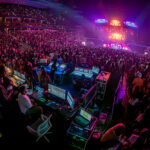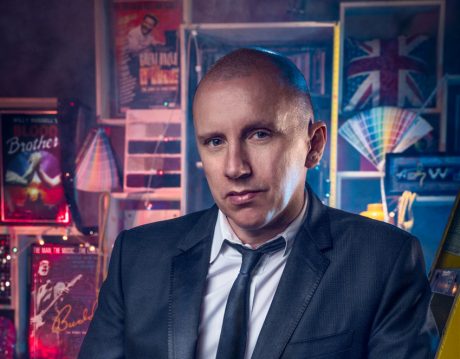
“I’m confident that in five years, 75 percent of all sets will have gone to XR. I always encourage students to become an expert on [that XR] software, then designers will need you.” – Andy Walmsley
If there was any doubt that encouraging your kid to play with LEGOs is a good call, meet Andy Walmsley. Largely ignoring the age “limit” of when to stop “playing” with the little plastic bricks, he was still at it at 15. See, he had built a TV studio to scale, as he “wanted to be a camera man, and with the LEGO set, I was figuring out camera angles.” Meanwhile, his show-biz parents had show-biz friends, and one was Paul Daniels, today one of UK’s most famous magician and television personality. But back when he was struggling, he was visiting Walmsley’s parents when he became fascinated with what Andy was doing – and also impressed. On the spot, Daniels asked the teen to design his next TV show set.
Walmsley would go on to be the youngest set designer to work a major West End production, his first musical being The Buddy Holly Story, which ran for 13 years. His Who Wants to be a Millionaire set is arguably the most influential and copied television set today. Many others follows, as did over 20 Las Vegas shows. His work is also found on cruise ships, museums, theme parks, and the corporate world. Oh, and he picked up an Emmy, too.

The Las Vegas of England
Walmsley grew up in Blackpool, “the UK’s version of Las Vegas … or really a more of crappy version of Reno.” It was a showbiz town, where a dozen shows were going on at any one time. His great grandfather was a famous comedian headliner; his grandfather played bass in an orchestra; his grandmother played piano in the silent movies; his dad was a famous comedian; and … wait for it … his mom was a fire-eater. “All our family friends were wacky performers, ventriloquists, stage hypnotists, [etc.]. I grew up able to play five instruments, juggle, do magic, tap dance – you name it.”
Everyone has worked for a clown, but Walmsley literally did. At 13, his first “real” job was with the clown Charlie Cairoli at the Blackpool Tower Circus. “I would prep his props and make the custard pies.” He also raised a tiger club and learned the trapeze. He would go onto college but kept doing stagehand work on Blackpool shows during summer vacations. Paul Elliot, a West End producer, spotted his talent and sent him to London to design The Buddy Holly Story, a full-blown major musical with 18 set changes. “He asked me if I wanted to take a fee or a royalty,” Walmsley says. “I had just left college and was broke and wanted the fee, but he talked me into the royalty. To our shock the show was a monster hit and was duplicated in 22 countries and on Broadway!”
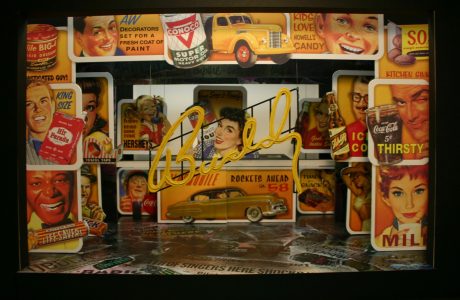
This success made him also want to do television set work. The TV executives he connected with were perplexed as to why he’d want to go from the West End to the telly, but he “bugged the hell out of them” and thus got some pretty big shows early on including Millionaire. “The producers explained that the show was going to be very dramatic, but they had no idea what the set should look like,” Walmsley says. “Without missing a beat, I said, ‘let’s do it in the round.’ They were skeptical, and I asked them to give me 24 hours.” He went home and knocked out a model. Doing a television game show in the round that allowed for all the camera angles was challenging but, “the hours working out camera angles with my LEGO studio paid off!” The ginormous popularity of the show demanded Walmsley’s set be exactly replicated in 108 countries (no, he didn’t get royalties). This radical departure from the “Jeopardy/Wheel of Fortune” type game show set would have lasting influence.
Having done a television show for Simon Cowell called Pop Idol, naturally he got the call for American Idol. In addition to that being another world-wide success, it helped him move across the pond to the U.S. America’s Got Talentand So You Think You Can Dance followed, as did an Emmy for his work on Idol.
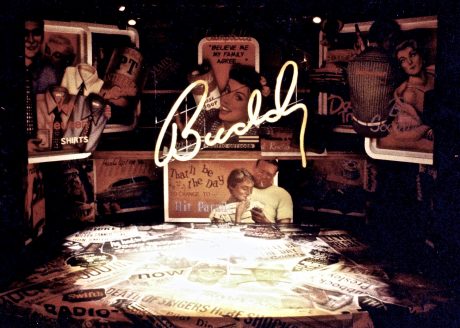
Viva Las Vegas
“I had been coming to Vegas for decades and would see a lot of shows,” Walmsley says. In 2005, he moved there. His first show he did there was It was the very last show at the Stardust hotel in the iconic showroom, Tailpipes, which he describes as a “bizarre mix of showgirls and famous classic cars – I know, I know. Only in Vegas!” He would do another 19 including The Jacksons, Meat Loaf, Heart Break Hotel and I Love the 90s. His last before the lockdown was RuPaul Drag Show at the Flamingo. “It was a big-scale show, a spectacle in terms of scenery and everything else.” He has number 21 in the que slated to open in August.
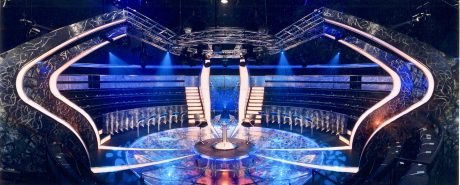
Whatever his project is, he starts with his inner kid, with SketchUP 3D Modeling software replacing his LEGO set. “I am finding that directors love a 3D CAD model that they can walk around virtually,” he says. “I’ve been using SketchUp for 15 years and with all that practice, I’ve gotten insanely fast and creating detailed models.” When that design is approved, he jumps over to Vectorworks to do the construction drawings. Today he tends to work mostly from his home, hotel room, or even that Starbucks, where he “knocks out a complex show in a couple of days without help – and that saves me a fortune in assistants. Plus I’m not inhaling glue and paint fumes anymore.” Photoshop and Unreal Engine are also loaded on his laptop. Once on the set, “I certainly am guilty of using miles of LED tape on all my shows, which I’ve been doing going back to in the UK when I was the ‘neon king. Stagehands would roll their eyes when they learned I was the designer of show,” he says with a laugh. “I’m also a big fan of chrome or stainless steel for some sparkle on my set, and these days you can achieve that look with a chrome powder coat.” He adds that he’s used a lot of Rosco Black RP material, and for TV sets, I like a lot of gloss flooring, specifically Bona Super Sport Gloss water-based wood floor finish.
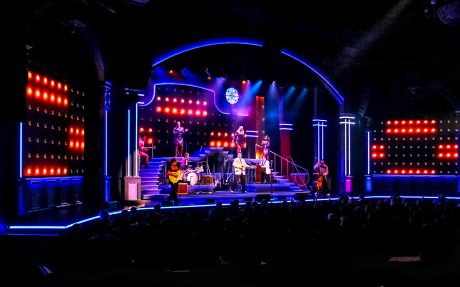
While he’s grateful for the enormous variety of work that comes his way, “there’s no question that musical theater is where my heart is,” he says. “But I also love ‘the perfect combo’ which for me is a big live TV show done from a theater. That’s the best of both worlds.” Looking at the ever-changing post-pandemic world of entertainment, he says anyone even thinking of getting into this business better be well-versed in Extended Reality/Virtual Reality technology. “I’m confident that in five years, 75 percent of all sets will have gone to XR. I always encourage students to become an expert on [that XR] software, then designers will need you. Then once you’re indispensable, you’ll be secure. Then it’s just a case of hustling and being patient for that big break into designing.”
Not all his timing is perfect: He had actually moved back to New York City last year, just in time for the pandemic. “I was one of first to get the hell out of there because I could see theater being closed for a long time.” Knowing TV would boom, he rented a car, got in it with his wife and dog, and drove back to Las Vegas. “Thank God I’ve actually had a busy year with TV.” As far as the future, “I really want to keep working at least another 15 years. I’d love to do some more big scale TV but I really want to focus on theater and crank out a bunch of musicals … you know, before I hang up my mouse and my LEGOs.”



